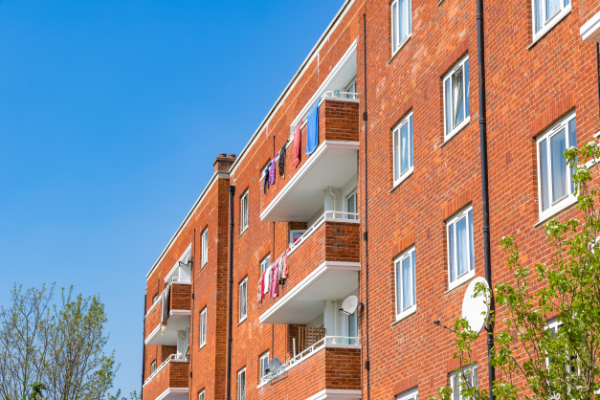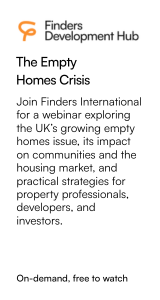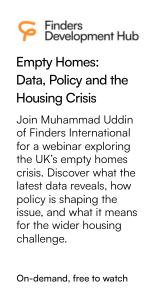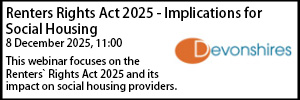The Domestic Abuse Act 2021: What does it mean for social housing providers?
- Details
The Domestic Abuse Act (“DAA”) received royal assent on 29 April 2021 following a much-delayed journey through Parliament. The Act will have important ramifications for social housing providers – including changes for homelessness under Part VII of the Housing Act 1996 which came into effect on 5 July 2021. Tara O’Leary provides a summary of what to expect.
What is “domestic abuse”?
Section 1 introduces, for the first time, a statutory definition of “domestic abuse”. This recognises a wide range of abusive, coercive or controlling behaviours beyond the use of physical violence. It builds on the expansive approach formulated by Lady Hale in Yemshaw v Hounslow LBC [2011] UKSC 3.
The behaviour of a person (“A”) toward another person (“B”) will now be “domestic abuse” if:
- A’s behaviour toward B is “abusive”; and
- A and B are both over the age of 16 and are “personally connected” to each other.
Abusive behaviour
A person’s behaviour is defined as ‘abusive’ if it consists of:
- Physical or sexual abuse;
- Violent or threatening behaviour;
- Controlling or coercive behaviour;
- Economic abuse, defined by s.1(4) as behaviour that has a “substantial adverse effect on B’s ability to … acquire, use or maintain money or other property, or [to] obtain goods or services”;
- Psychological, emotional or other abuse.
‘Abusive’ behaviour can consist of a single incident or a course of conduct. Furthermore, behaviour can be abusive towards B even if it consists of conduct directed towards another person, such as B’s child: ss.1(3) and (5).
There is no statutory definition of ‘controlling or coercive’ behaviour or ‘psychological abuse’ and thus it will fall to decision-makers or the courts in individual cases to determine whether those criteria are met. However paragraph 12 of the DDA’s Explanatory Notes suggest that:
“Controlling behaviour is a range of acts designed to make a person subordinate and/or dependent by isolating them from sources of support, exploiting their resources and capacities for personal gain, depriving them of the means needed for independence, resistance and escape and regulating their everyday behaviour. …
Coercive behaviour is an act or a pattern of acts of assault, threats, humiliation and intimidation or other abuse that is used to harm, punish, or frighten their victim.”
Personally connected
Section 2 provides an exhaustive list of those who are ‘personally connected’ to one another. It includes married and engaged couples; those in “intimate personal relationships”; persons who each have a parental relationship with a child; and “relatives”.
Housing providers should note that the DAA adopts the definition of “relatives” provided by s.63 of the Family Law Act 1996. This is wider than the definition provided by s.113 of the Housing Act 1985, and includes (amongst others) former spouses, in laws and ‘step’ relatives, first cousins, and certain persons who are cohabiting or have cohabited with each other.
What is clear is that “domestic abuse” can now occur in a wide range of different relationships and contexts, including amongst former partners, fiancés, co-parents, siblings and other extended and/or adopted family, whether they cohabit or not. For example problems such as honour-based abuse, female genital mutilation and forced marriage should now be recognised within an overall rubric of ‘domestic abuse’: see e.g. para. 21.15 of the Homelessness Code of Conduct.
However the requirement that both persons be over the age of 16 means that abusive behaviour amongst children, or between adults and children, will not be caught by the definition and may need to be addressed using child protection mechanisms.
Homelessness
Section 78 DAA amends Part VII of the Housing Act 1996 in several important ways. These changes came into effect on 5 July 2021.
Definition of homelessness
Section 177(1) of the 1996 Act previously provided that, for the purposes of determining if someone has become homeless, it would not be reasonable for a person to continue to occupy accommodation if it is “probable” this will lead to “domestic violence or other violence” against them or another person who resides with them as part of their family or who might reasonably be expected to do so.
In Yemshaw, Lady Hale ruled that “domestic violence” in this particular context was not restricted to acts of physical violence or contact, and could include threatening or intimidating behaviour or any other form of abuse which might give rise to risk of harm.
The DAA now makes that approach explicit by amending s.177(1) so that references to “domestic … or other violence” (and the associated definition of ‘associated persons’ for the purposes of s.178) are abolished and replaced with “violence or domestic abuse” as defined above.
In practical terms, these changes will almost inevitably broaden the circumstances in which local housing authorities (“LHAs”) will be required to accept homelessness applications from persons who have already experienced or who are at “probable” risk of facing domestic abuse from any person to whom they are “personally connected”.
When the perpetrator of abuse is not ‘personally connected’ to the victim (e.g. a neighbour), then the victim will become statutorily homeless if it is “probable this will lead to violence … against him”. ‘Violence’ in this context is now defined as “violence from another person [or] threats of violence from another person which are likely to be carried out”. It is likely this will also be held to extend to non-physical or psychological harm: see e.g. Hussain v Waltham Forest LBC [2015] EWCA Civ 14.
Priority need
Section 189(1) of the 1996 Act will be amended by introducing an entirely new category of priority need. A person will now have priority need for accommodation if they are:
“(e) A person who is homeless as a result of that person being a victim of domestic abuse”.
Previously, Article 6 of the Homelessness (Priority Need for Accommodation) (England) Order 2002/2051 granted priory need to (emphasis added):
"(1) A person who is vulnerable as a result of ceasing to occupy accommodation by reason of violence from another person or threats of violence from another person which are likely to be carried out."
That provision remains in force but has been amended so that it is now followed by these words:
“(2) For the purposes of this article—
a) “violence” does not include violence that is domestic abuse;
b) “domestic abuse” has the meaning given by section 1 of the Domestic Abuse Act 2021.”
In practical terms, these changes create two categories of priority need which may arise from use or threats of violence and are, again, likely to broaden the circumstances in which LHAs will be obliged to accept the ‘main’ duty towards victims of abuse:
- In regards to victims of “domestic abuse”, it will no longer be permitted for LHAs to carry out an evaluative assessment of whether or not a person has become vulnerable as a consequence of their experiences. Rather, LHAs will be required to carry out a purely factual assessment as to whether or not (i) the person has in fact experienced “domestic abuse” as defined by the DAA, and if yes (ii) is homeless as a result.
- For victims of any violence which does not meet the definition of “domestic abuse”, the position remains that LHAs must carry out an evaluative assessment under Article 6 as to whether or not they are ‘vulnerable’ in the Hotak sense as a result of their experiences. This will apply to violence carried out by any persons who are not “personally connected” or even by children under the age of 16. There is no reason to think that Yemshaw no longer applies, so ‘violence’ in this context would likely include non-physical threats and abuse.
Homelessness Code of Guidance
Chapter 21 of the Code of Guidance deals in depth with the issue of domestic abuse. It has already been fully rewritten with effect from 5 July 2021 to reflect the changes introduced by s.78 DAA.
The entire chapter merits careful attention. It provides comprehensive advice on recognising and understanding domestic abuse; carrying out inquiries and investigations in a safe manner which does not unintentionally imperil victims; preventing and relieving homelessness; and suitability of accommodation.
The chapter will also prove useful to social housing providers dealing with domestic abuse in the context of housing management and anti-social behaviour. By way of example, the following is salient advice for all social housing providers:
21.11 An important factor in ensuring that an authority develops a strong and appropriate response to domestic abuse is understanding what domestic abuse is, the context in which it takes place in and what the impacts are on victims; as well as how the impacts may be different on different groups of people. Specialist training for staff and managers will help them to provide a more sensitive response and to identify, with applicants, housing options which are safe and appropriate to their needs. Housing authorities may consider training delivered by specialist domestic abuse organisations and are strongly encouraged to provide risk assessment training to support staff and managers with responsibility for assessing applications from victims of domestic abuse.
Other issues
Section 179(2)(d) of the 1996 Act is also amended so that LHAs’ duty to provide advisory services now extends to meeting the needs of victims of “domestic abuse” as defined by the DAA.
Similarly, the conditions under s.198(2) of the 1996 Act are altered so that a local connection referral can only be made if the applicant or any person who lives with them will not run the risk of “domestic abuse” in the other LHA’s district.
Secure tenancies
Section 79 DAA inserts a new s.81ZA into the Housing Act 1985. Once enacted this will require LHAs granting a secure tenancy to any victims of “domestic abuse” to provide a lifetime rather than a flexible tenancy. As yet the government has not said when this provision will come into effect.
It is important to note there is no change to the circumstances in which LHAs may discharge their s.193 ‘main’ homelessness duty towards victims of domestic abuse (i.e. there remains no obligation for applicants to be guaranteed a Part VI allocation), nor is there any requirement for LHAs to amend their housing allocation schemes so as to grant additional priority to such victims.
Possession claims against abusers
By Ground 2A, Schedule 2 Housing Act 1985 and Ground 14A, Schedule 2 Housing Act 1988, there are already grounds of possession against secure and assured tenants of LHAs and social housing providers where:
- The property is occupied by a couple, and one or both partners have the status of tenant;
- One partner “has left the dwelling-house … because of violence or threats of violence” from the other partner towards them or towards a member of their family who was residing with them; and
- The court is satisfied that the partner who has left is unlikely to return.
The DAA does not make any amendments to these provisions. However it is likely that the courts will begin to look to the DAA’s definition of “domestic abuse” when interpreting “violence or threats of violence” for the purposes of these grounds, bearing in mind that Yemshaw confirmed [25] that “where Parliament uses a word such as ‘violence’ the factual circumstances to which it applies can develop and change over the years”.
The upshot is that social housing landlords should feel justified and – it is hoped – confident in bringing possession claims against persons who commit “domestic abuse” in a wider range of circumstances than ever before, including cases of coercive or economic control, psychological harm, or honour-based abuse.
Unfortunately however Grounds 2A and 14A only apply where abuse has been carried out by a spouse or cohabiting partner. They will not apply to ‘domestic abuse’ committed by other family members or persons who are “personally connected”. In this respect the DAA appears to have missed a valuable opportunity to align the Housing Acts with the DAA’s definition of “domestic abuse”, and to assist social landlords wishing to address domestic abuse and its consequences through their housing management functions.
Landlords may be advised, in such cases, to consider whether any of the absolute or discretionary anti-social behaviour grounds of possession may apply. Alternatively, where tenancy agreements include a covenant prohibiting domestic violence or abuse, claims for possession may be brought alleging breach of contractual terms.
Anti-social behaviour
The DAA does not make many direct amendments to the existing ‘toolbox’ of anti-social behaviour powers which social housing providers can use to support and protect victims of domestic abuse. Nonetheless the DAA offers some interesting features which may be useful in this context:
- When fully enacted the DAA will strengthen the powers of the police to deal with domestic abuse. For example by s.68 DAA, the criminal offence of controlling or coercive behaviour under s.76 of the Serious Crime Act 2015 has been extended to a wider range of ‘personally connected’ individuals and relatives; a number of other new criminal offences will also be introduced. Police will also gain power to serve domestic abuse protection notices and apply to the Magistrates’ Court for domestic abuse protection orders. These changes may assist social housing providers in cases where there is productive multi-agency cooperation with the police.
- The list of “serious offences” for the purposes of the absolute grounds of possession will be extended to include a new offence introduced by the DAA: strangulation or suffocation under s.75A of the Serious Crime Act 2015. See Ground 14A, Schedule 2A Housing Act 1985.
- Section 66 DAA will introduce amendments to the Courts Act 2003 which prohibit perpetrators of domestic abuse from personally cross-examining the victim of their behaviour in “civil proceedings”, which include any proceedings in the County Court and High Court. Two separate prohibitions will apply:
a) One is intended to protect the victims of certain specified offences from cross-examination by a perpetrator who has received a conviction or caution. The “specified offences” will be identified in due course within regulations laid by the Lord Chancellor; it is safe to assume they will include a range of offences linked to domestic abuse. The prohibition will however cease to apply once the conviction or caution become spent.
b) The other shall prohibit a “party to the proceedings” against whom an an-notice “protective injunction” is in force from cross-examining a witness who is protected by the injunction. “Protective injunctions” will also be specified in due course by regulations – it is hoped this will include anti-social behaviour injunctions. The Act includes a definition of “on-notice” injunctions which will likely be satisfied whenever the defendant has had notice of a return hearing.
These provisions may be highly significant in any claim for possession or an ASB injunction where a perpetrator of domestic abuse is a defendant to the proceedings, is legally unrepresented and acting in person at trial, and the victim of their behaviour has been asked to give oral evidence in support of the landlord’s case. These provisions will not be limited to spouses or partners thanks to the wide definition of those “personally connected”. It is expected that the Civil Procedure Rules will, in due course, need to identify new rules and procedures to give effect to these prohibitions and ensure a fair trial for the defendant.
Conclusion
The DAA provides a clear steer to all social housing providers that they should adopt working practices which recognise, identify and address domestic abuse in all its guises. LHAs and registered providers may wish to consider updating their policies and procedures so as to adopt the definition of “domestic abuse” provided by the DAA. This may become particularly important in relation to (i) Part VI housing allocation policies; (ii) internal policies and procedures for addressing anti-social behaviour; and (iii) tenancy terms and conditions prohibiting violence and domestic abuse.
Tara O'Leary is a barrister at Cornerstone Barristers.



































